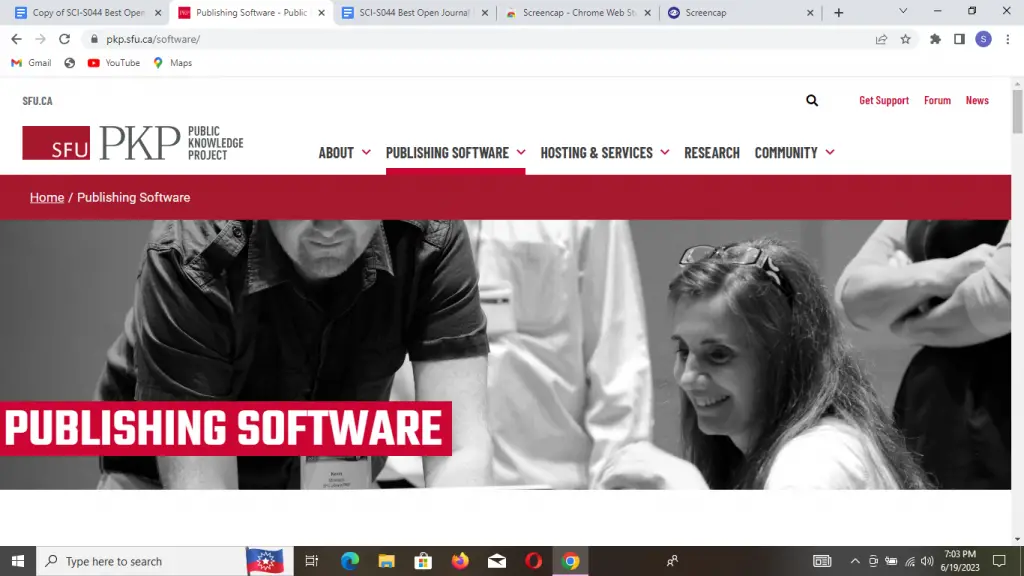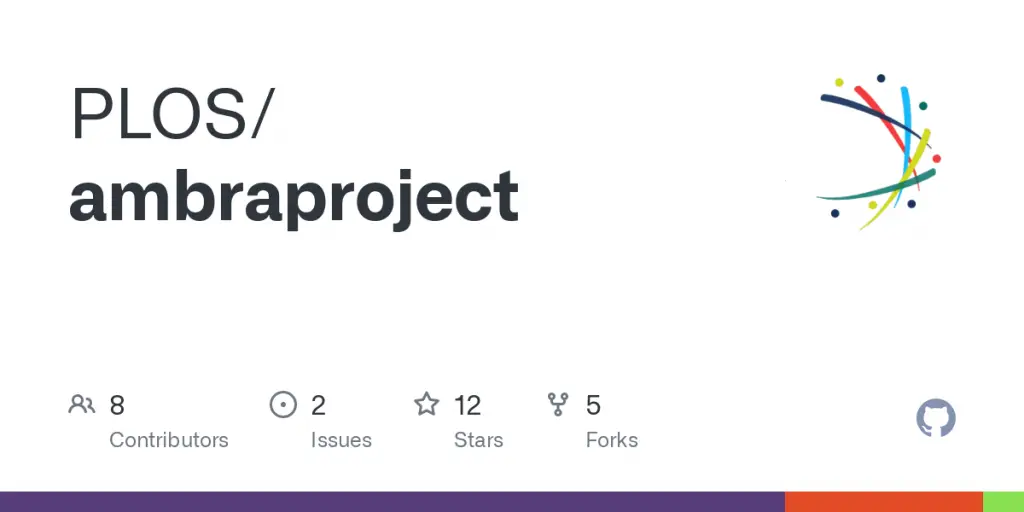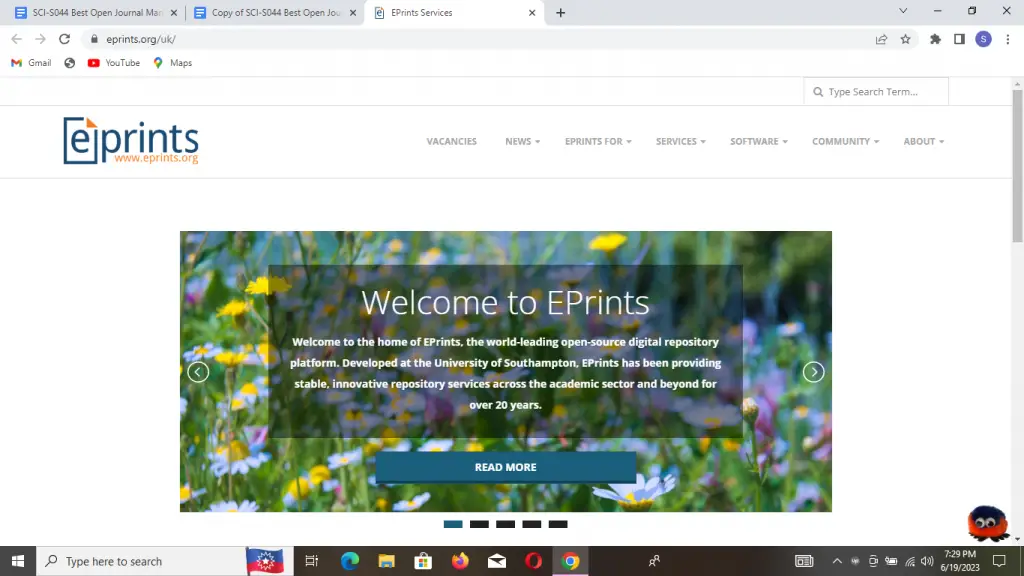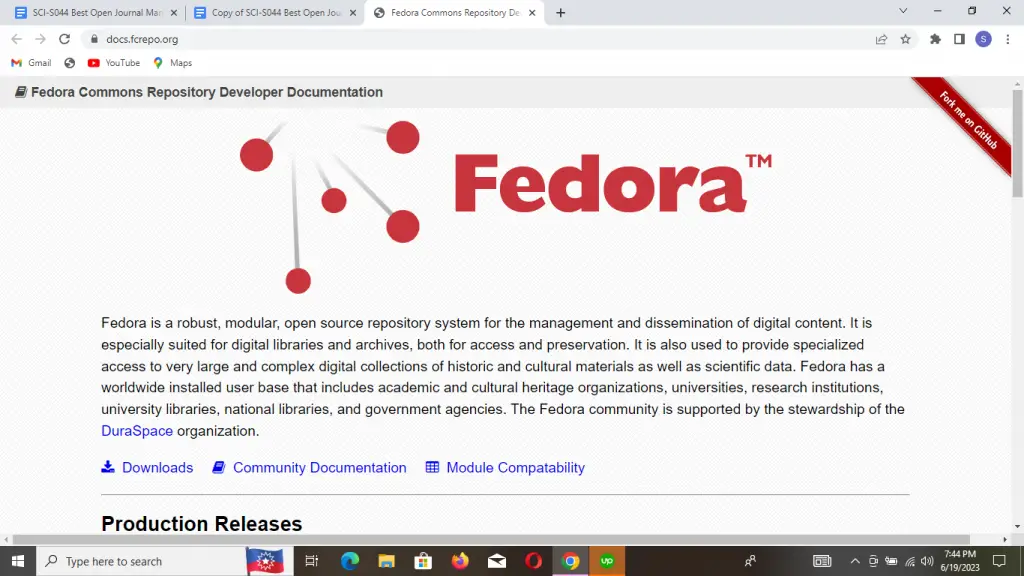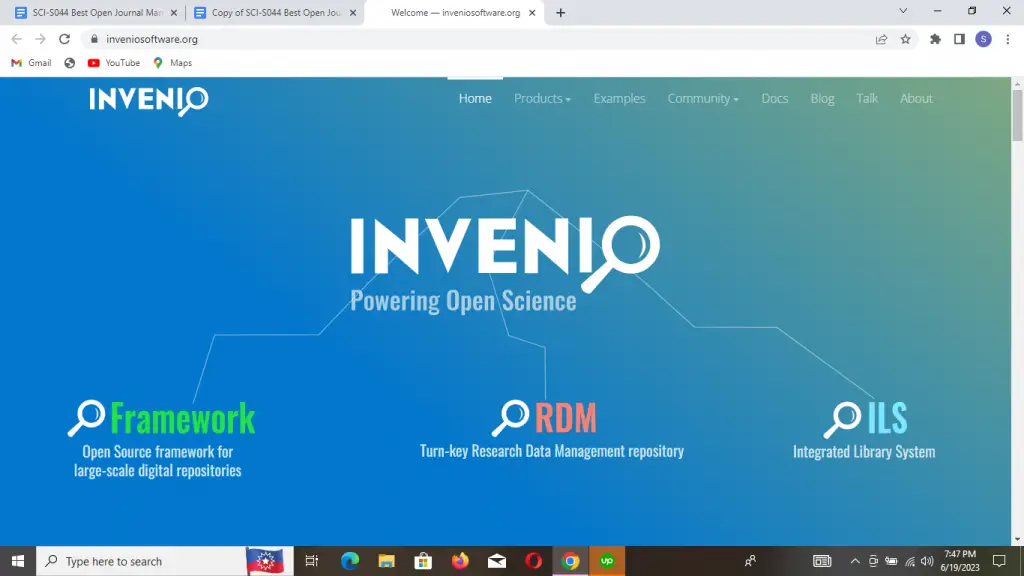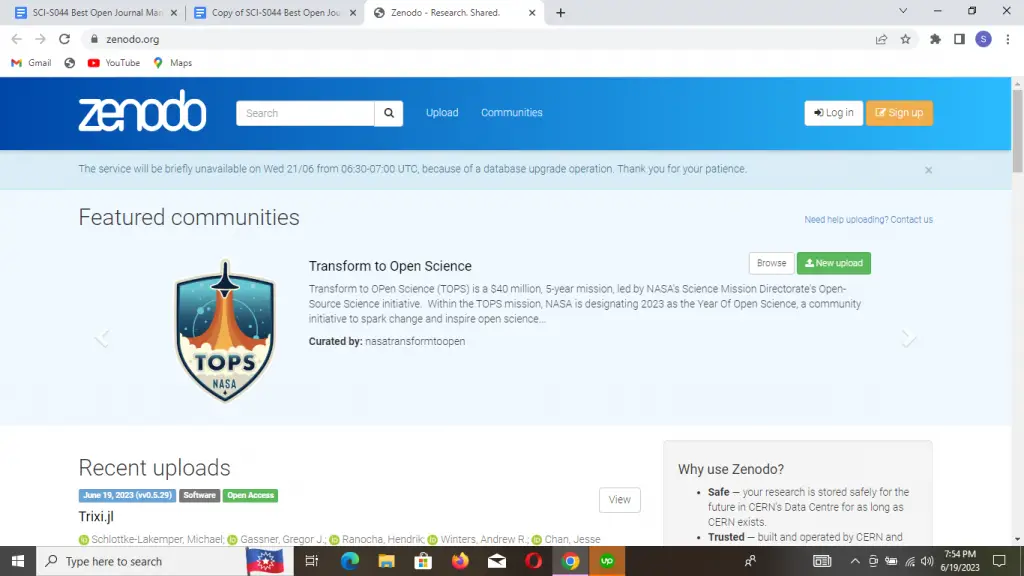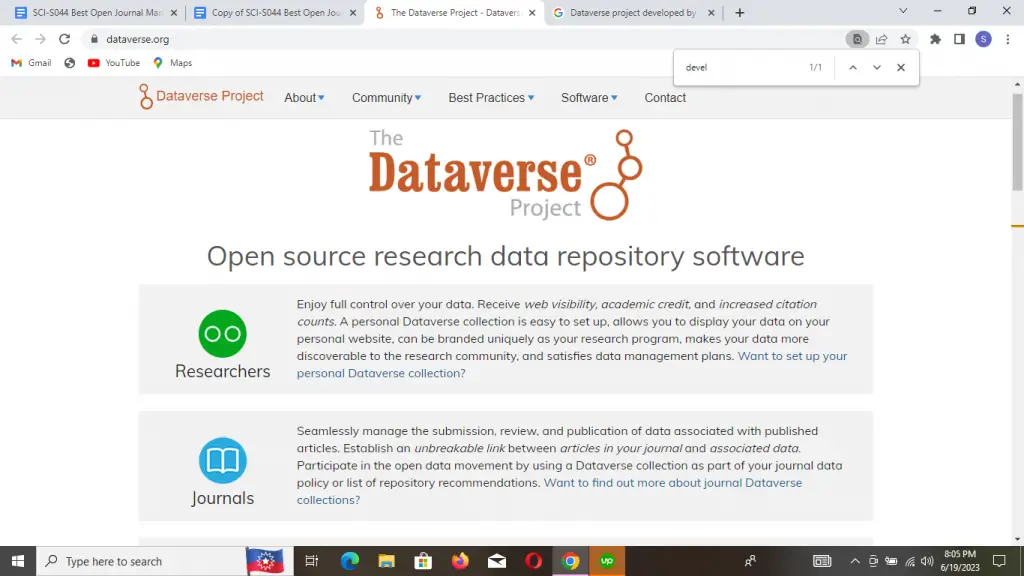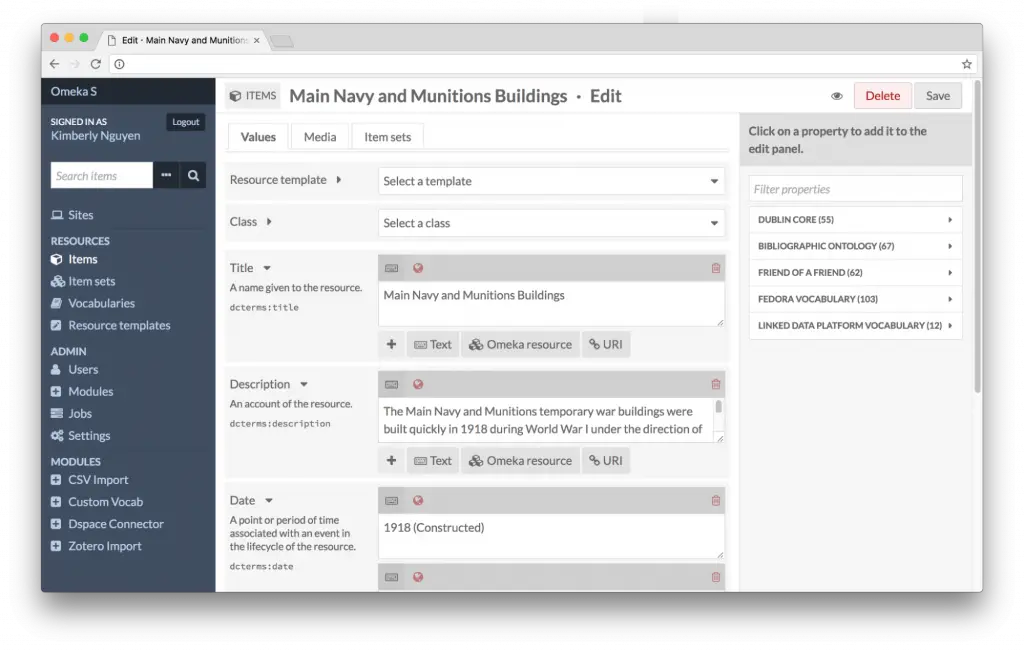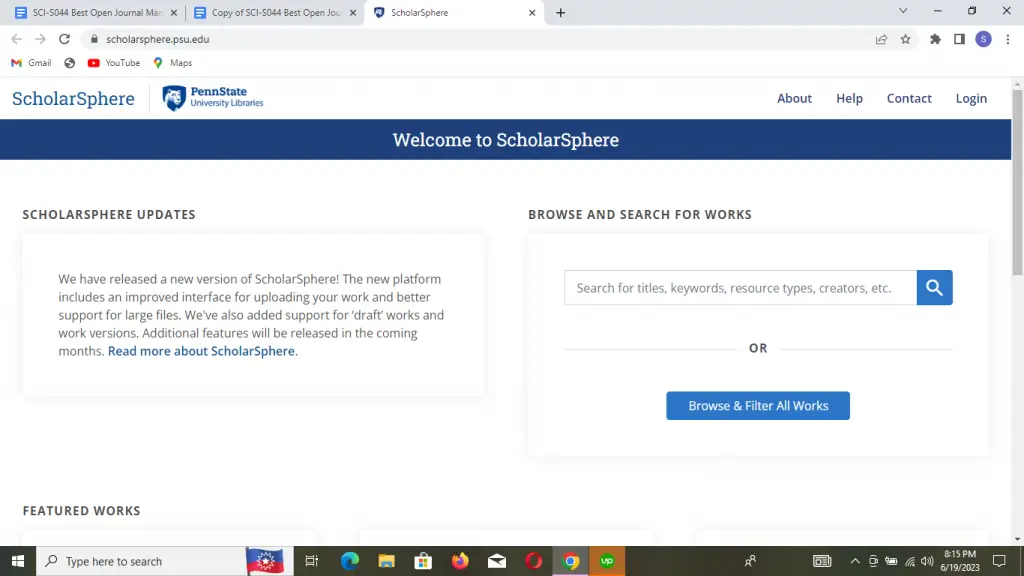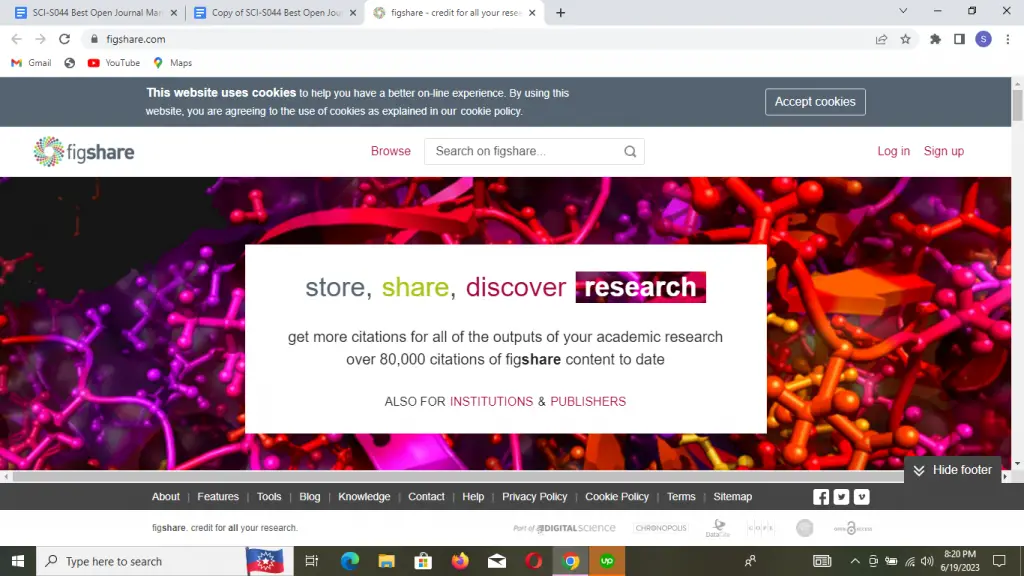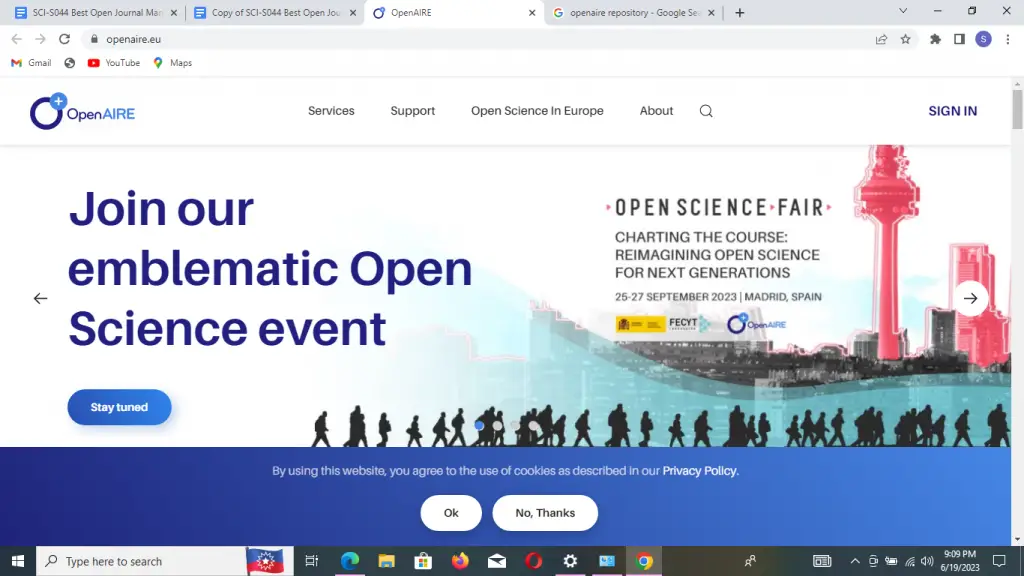Need a better way to manage your research publications? Discover the 25 best open journal management tools to simplify your academic publishing process.
In the evolving digital landscape, maintaining a journal can be an overwhelming endeavor. As submissions, reviewers, and editorial board members continue to grow in number, it’s crucial to implement effective tools to manage the workload.
Open journal management tools have become a widely favored solution, simplifying the editorial process and facilitating collaboration, submission tracking, and quality assurance for published articles.
In this blog post, we will delve into some of the top open journal management tools on the market, showcasing their features and advantages, and guiding you in selecting the one that aligns with your requirements.
Table of Contents
Overview
Academic journal management tools help researchers, institutions, and organizations manage, publish, and share their scholarly work with the academic community.
These tools offer a range of features to support the entire publishing process, from submission and peer review to indexing and archiving. Let’s dive into the top tools for academic journal management and their advantages.
Best Open Journal Management Tools
#1. Open Journal Systems (OJS): Best for scholarly journal management & publishing
Summary
- A comprehensive solution for journal management
- Offers a user-friendly interface and extensive documentation
- Boasts multi-language support
OJS is a widely-used open-source software for managing and publishing scholarly journals.
Developed by the Public Knowledge Project, OJS provides a comprehensive solution for journal management, including submission, peer review, and indexing.
What are the benefits of using OJS?
The benefits of this tool in academics are numerous:
- Streamlined workflow: OJS simplifies the entire publishing process, making it easier for editors, authors, and reviewers to collaborate and manage content.
- Cost-effective solution: As an open-source platform, OJS is free to use and can save academic institutions and publishers significant resources compared to commercial alternatives.
- Increased visibility and discoverability: OJS supports indexing in major databases and search engines, ensuring that published content is easily accessible to a global audience.
- Quality control and integrity: OJS has built-in features to manage the peer review process and ensure the quality and integrity of published research.
Open Journal Systems (OJS) is a flexible tool for managing and publishing academic journals.
With its user-friendly interface, extensive documentation, and automation of many publishing tasks, OJS streamlines the entire publishing process, making it an invaluable resource for academic institutions, publishers, and scholars alike.
Source: https://pkp.sfu.ca
#2. Ambra: Best for Open-Access Journal publishing & article metrics
Summary
- Focus on open-access publishing and article metrics
- Comes with article-level metrics
- Streamlines the entire publishing process for open-access journals
Developed by the Public Library of Science (PLOS), this open-source platform offers a comprehensive solution for managing article submissions, peer review, and publishing, while also integrating with article-level metrics.
What are the benefits of using Ambra?
Ambra:
- Promotes open-access publishing, increasing the visibility and impact of research
- Provides article-level metrics, enabling researchers to track the reach and influence of their work
- Supports a transparent and efficient peer-review process
- Encourages collaboration and knowledge sharing among researchers
By providing a seamless and user-friendly experience, Ambra plays a crucial role in promoting open-access publishing. It fosters collaboration among researchers, and enhancing the visibility and impact of academic research.
Source: https://www.librarianshipstudies.com
#3. Digital Commons: Best for institutional repository solution
Summary
- Is fully hosted
- Offers reliable impact metrics
- Comes with unlimited storage
Digital Commons, developed by bepress, is a leading institutional repository solution designed to showcase and preserve the scholarly output of institutions. It offers a wide range of features for managing and publishing journals, books, newsletters, or even magazines.
What are the benefits of using Digital Commons?
This all-in-one solution provides numerous benefits to the academic community, including:
- Centralized content management: Digital Commons enables institutions to manage and publish a diverse range of content in a single, unified platform.
- Increased visibility and discoverability: By aggregating and organizing an institution’s intellectual output, Digital Commons makes it easier for researchers, students, and the public to find and access scholarly materials.
- Customizable interface: The platform allows institutions to create a unique, branded interface that reflects their identity and showcases their research strengths.
- Usage statistics and reporting: The platform includes built-in analytics and reporting tools, enabling institutions to track and measure the usage and impact of their scholarly output.
By leveraging the power of Digital Commons, institutions can enhance the visibility and reach of their content, foster collaboration, and support the advancement of knowledge in their respective fields.
Source: https://bepress.com
#4. EPrints: Best for open-access repositories for research
Summary
- Designed for open-access repositories
- Povides a flexible architecture for customization
- Tailors repositories to specific needs and requirements
Developed by the University of Southampton, EPrints provides a flexible and customizable solution for managing and publishing research outputs.
What are the benefits of using EPrints?
Benefits of EPrints in academics include:
- Increased visibility of research: Open-access repositories make research outputs easily accessible to a global audience, increasing the visibility and impact of academic work.
- Improved collaboration: By providing a centralized platform for sharing research, EPrints facilitates collaboration among researchers and institutions.
- Efficient research management: EPrints streamlines the process of managing research outputs, from submission and review to publication and archiving.
EPrints is a powerful tool for creating and managing open-access repositories in the academic world.
Source: https://www.eprints.org
#5. DSpace: Best for digital repositories for various organizations
Summary
- Provides a versatile platform for creating digital repositories
- Has extensive features and community support
- Manages a wide range of content types and ensures long-term preservation
DSpace is a versatile open-source platform designed to help organizations create digital repositories for managing, preserving, and providing access to their digital assets.
With its extensive features, customization options, and strong community support, DSpace has become a popular choice among academic institutions, libraries, and museums for ensuring the long-term preservation and accessibility of their valuable digital content.
What are the benefits of using DSpace?
Here is why more 1,000 organizations use this journal management software:
- Efficient content management: DSpace allows academic institutions to easily store, manage, and organize various types of digital content, such as research papers, theses, dissertations, datasets, and multimedia files.
- Long-term preservation: DSpace ensures the long-term preservation of digital assets by providing features like versioning, checksum validation, and format migration support.
- Customizable workflows: Academic institutions can configure DSpace to meet their specific needs, including customized submission workflows, access control, and user roles.
- Interoperability: DSpace supports various protocols and standards, such as OAI-PMH and SWORD, which enable seamless integration with other systems and platforms, facilitating data exchange and collaboration.
By offering an efficient and flexible solution for managing a wide range of content types, DSpace promotes knowledge sharing, collaboration, and innovation in the academic community.
Source: https://dspace.lyrasis.org
#6. Islandora: Best for digital asset management with Drupal, Solr, and Fedora
Summary
- Integrates with Drupal, Fedora, and Solr
- Offers a highly customizable and scalable solution
- Comes modular architecture for adding features and functionalities
Islandora is an open-source digital asset management platform that combines Drupal, Fedora, and Solr to provide a powerful and flexible solution for managing and preserving digital assets.
What are the benefits of using Islandora?
Benefits of Islandora include:
- Digital Repository: Islandora provides a robust platform for storing, managing, and preserving various types of digital assets, making it an ideal solution for academic institutions that need to manage and share their digital collections.
- Metadata Management: Islandora supports various metadata standards, such as Dublin Core, MODS, and MARC, allowing academic institutions to describe their digital assets in a standardized and structured way. This improves discoverability and interoperability.
- Preservation and Archiving: Islandora’s integration with Fedora ensures that digital assets are stored in a secure and preservation-friendly environment, adhering to best practices for long-term preservation of digital content.
Source: https://www.islandora.ca
#7. Fedora Commons: Best for flexible digital repositories
Summary
- A flexible platform for creating digital repositories
- Provides a modular architecture for customization
- Ensures preservation and accessibility of digital assets
Fedora Commons is an open-source platform for creating flexible digital repositories. Developed by DuraSpace, Fedora Commons offers a powerful and modular solution for managing and preserving digital assets.
What are the benefits of using Fedora Commons?
Benefits of Fedora Commons:
- Enhanced Collaboration: Fedora Commons allows academic institutions to easily share and collaborate on digital assets, fostering interdisciplinary research and collaboration among scholars and researchers.
- Improved Discoverability: The platform supports advanced search and retrieval capabilities, making it easier for users to find and access relevant digital resources.
- Long-term Preservation: Fedora Commons ensures the long-term preservation of digital assets, safeguarding the valuable research and scholarly output of academic institutions for future generations.
- Scalability: The platform is designed to handle large volumes of digital assets, making it suitable for institutions of all sizes, from small colleges to large research universities.
Fedora Commons is a powerful and versatile platform for creating digital repositories in academic institutions.
Source: https://docs.fcrepo.org
#8. Invenio: Best for large-scale digital repositories for research
Summary
- Focus on large-scale digital repositories
- Provides powerful features and scalability
- Suitable for handling large volumes of data and content
Invenio is an open-source platform for creating large-scale digital repositories for research. Developed by CERN, Invenio provides a powerful and scalable solution for managing and publishing research outputs.
What are the benefits of using Invenio?
Invenio offers numerous benefits for academics and researchers, making it an ideal choice for creating and managing digital repositories. Some of the key advantages include:
- Robust and scalable: Invenio is designed to handle large volumes of data and content, making it suitable for research institutions and organizations with extensive collections. It can easily scale to accommodate growing data storage needs.
- Flexible and modular: Invenio’s modular architecture allows for easy customization and integration with other tools and services. This flexibility enables institutions to create tailored solutions that meet their unique requirements.
- Rich metadata support: Invenio supports a wide range of metadata standards, making it easy to describe, organize, and discover research outputs. This ensures better visibility and discoverability of research materials.
Invenio provides a comprehensive solution for managing the full research lifecycle, enabling collaboration among researchers, institutions, and other stakeholders.
Source: https://inveniosoftware.org
#9. Zenodo: Best for multidisciplinary research output sharing
Summary
- Supports a wide range of file formats and assigns DOIs to submissions.
- Integrates with GitHub for streamlined research workflows.
- Facilitates easy discoverability and citation of research outputs.
Zenodo is an open-access repository developed by CERN, designed for sharing and preserving multidisciplinary research outputs. It offers a platform to store, share, and discover research data, software, and publications.
What are the benefits of using Zenodo?
Some of the key benefits of using Zenodo in academics include:
- Assignment of Digital Object Identifiers (DOIs) to each submission, making research outputs easily citable and discoverable
- Streamlining the research workflow and making it easier to manage and share research outputs
- Increased visibility and impact of academic research
Zenodo is a valuable tool for academics, offering a comprehensive platform for storing, sharing, and discovering research outputs.
Source: https://zenodo.org
#10. Hyku: Best for multi-tenant digital repositories
Summary
- Open-source, multi-tenant digital repository solution
- Built on the Samvera framework
- Scalable, customizable, and user-friendly
Developed by DuraSpace, Stanford University, and the Digital Public Library of America, Hyku provides a scalable and customizable platform for institutions to manage and share their digital assets.
What are the benefits of using Hyku?
Key benefits include:
- Offers a scalable and customizable platform for managing and sharing digital assets.
- Supports various content types, including text, images, audio, and video.
- User-friendly interface for setting up and managing repositories without extensive technical expertise.
Hyku is an excellent choice for organizations looking to efficiently manage and share their digital assets while maintaining control and customization options.
Source: https://hyku.samvera.org
#11. Dataverse: Best for research data publishing & preservation
Summary
- Open-source web application for sharing, preserving, and citing research data
- Developed by Harvard University’s Institute for Quantitative Social Science
- Supports various file formats, metadata standards, and data management tools
Dataverse makes it easy for researchers to publish and manage their research data.
What are the benefits of using Dataverse?
Benefits of using Dataverse include
- Supports a wide range of file formats and metadata standards for well-documented research data.
- Provides tools for data citation, versioning, and access control.
- Helps researchers comply with data management requirements and best practices.
Dataverse is a complete solution for researchers, who manage and share their data in compliance with the latest standards and best practices.
Source: https://dataverse.org
#12. Omeka: Best for digital exhibits & collections for cultural institutions
Summary
- Designed for cultural institutions to create engaging and visually appealing digital exhibits.
- Supports metadata standards and controlled vocabularies for well-described digital collections.
- Offers a user-friendly interface with various plugins and themes for customization.
Omeka is an open-source web publishing platform for sharing digital collections and creating media-rich online exhibits. It is designed for use by cultural institutions, such as libraries, museums, and archives.
What are the benefits of using Omeka?
Benefits of this tool include:
- Engaging and visually appealing digital exhibits: Omeka allows institutions to create media-rich online exhibits that attract and retain users’ attention.
- Supports metadata standards and controlled vocabularies: Omeka ensures that digital collections are well-described and easily accessible, adhering to industry standards.
- User-friendly interface: Omeka’s interface is easy to navigate, making it simple for users to explore digital exhibits and collections.
- Customization options: With a variety of plugins and themes, Omeka allows institutions to tailor their exhibits to their specific needs and preferences.
Omeka is a powerful web publishing platform that enables cultural institutions to create engaging, media-rich digital exhibits while adhering to metadata standards and controlled vocabularies.
Source: https://omeka.org
#13. ScholarSphere: Best for self-deposit institutional repositories
Summary
- Open-source institutional repository
- Developed by Pennsylvania State University Libraries
- Supports multiple file formats, versioning, metadata editing, and access controls.
ScholarSphere offers a platform for researchers to deposit, manage, and share their scholarly works.
What are the benefits of using ScholarSphere?
The benefits of using include:
- Easy deposit and management of scholarly works: ScholarSphere provides a user-friendly platform for researchers to upload and organize their research outputs.
- Support for various file formats: ScholarSphere can handle a wide range of file formats, ensuring compatibility with different types of research outputs.
- Versioning and metadata editing: The platform allows researchers to easily update and manage different versions of their work, as well as edit metadata for better discoverability.
- Access controls: ScholarSphere enables users to set different access levels for their research outputs, ensuring the appropriate level of visibility and sharing.
ScholarSphere is a comprehensive platform that enables researchers to deposit, manage, and share their scholarly works, while offering features to enhance the research workflow and visibility.
Source: https://guides.libraries.psu.edu
#14. Figshare: Best for research output storage & sharing
Summary
- Supports open access to research data, making it easily discoverable and citable.
- Assigns DOIs to submissions and provides tools for data visualization and collaboration.
- Offers integrations with other research tools and services, such as Mendeley and Altmetric.
Figshare is a cloud-based repository for storing and sharing research outputs, including figures, datasets, images, and videos.
What are the benefits of using Figshare?
Benefits of using Figshare include:
- Ease of use: Figshare is designed to make it easy for researchers to upload and manage their data. The platform provides tools for uploading files, managing versions, and setting permissions.
- Open access: All data stored on Figshare is made openly available to other researchers through the DOI link associated with each submission.
- Versioning: Researchers can manage their data with the ability to track versions, including those that have been shared with other researchers.
- Collaboration: Researchers can collaborate on projects, share data and results, and discuss ideas.
- Import data from other tools: Figshare offers integrations with other research tools such as Mendeley, DataCite, and Altmetric to help researchers manage their publications, citations and impact metrics in a single place.
Figshare is a powerful research management tool that helps researchers to share and manage their data. It’s an ideal solution for both individual and collaborative research projects.
Source: https://figshare.com
#15. Cayuse Repository: Best for customizable, modular repository platform
Summary
- Offers a flexible solution for managing research outputs, theses, and other digital assets.
- Provides features like submission workflows, metadata management, search, and access controls.
- Modular architecture allows for easy customization and addition of new features.
Formerly Haplo Repository, Cayuse is an open-source platform for building customizable and modular repositories. It offers a flexible solution for managing research outputs, theses, and other digital assets.
What are the benefits of using Cayuse Repository?
Its benefits include:
- Open-Source: The code and documentation are available to anyone who wants to use it, modify it, or contribute to its development.
- Modular Architecture: The repository’s modular architecture allows institutions to easily add new features and functionalities, tailoring the solution to their specific needs and requirements.
- Scalability: The platform’s scalable architecture allows institutions to increase the repository’s capacity as their collections grow.
Haplo is an open source, scalable and modular repository interface solution for libraries. It’s designed to make it easy for institutions to host their own digital collections while still providing access through a centralized platform.
Source: https://cayuse.com
#16. Archivematica: Best for digital preservation & archiving
Summary
- Ensures that digital materials are well-described and preserved for future access.
- Supports various file formats and metadata standards for digital preservation.
- Offers integrations with other digital asset management and storage systems.
Archivematica is an open-source digital preservation system designed to maintain standards-based, long-term access to digital materials. It provides a comprehensive solution for preserving and archiving digital assets, including documents, images, audio, and video.
What are the benefits of using Archivematica?
The benefits of using Archivematica include:
- Security and integrity of digital assets
- Long-term preservation of digital materials
- Support for various file formats and metadata standards
Archivematica is a comprehensive solution for managing and archiving digital assets Integrations with other digital asset management systems.
Source: https://www.archivematica.org
#17. ResourceSpace: Best for centralized digital asset management
Summary
- Centralizes the organization, storage, and sharing of digital assets.
- Supports metadata standards and controlled vocabularies for well-described assets.
- Customizable and extensible with plugins and integrations to tailor the system to specific needs.
ResourceSpace is an open-source digital asset management system that provides a centralized platform for organizing, storing, and sharing digital assets, such as images, videos, and documents.
The platform offers a user-friendly interface and powerful search capabilities, making it easy for users to find and access the digital assets they need.
What are the benefits of using ResourceSpace?
Benefits of using ResourceSpace include:
- Improved access to digital assets: Users can search for and find what they need quickly, which reduces the time it takes to find and retrieve records.
- Improved discoverability: The system supports metadata standards, controlled vocabularies, and relationships between digital assets, so users can easily find related records.
- Improved user experience: The platform allows users to search, browse, and retrieve digital assets quickly, which reduces the time it takes to find and retrieve records. Improved metadata quality.
The platform supports a variety of features that can be customized to meet the needs of a particular organization.
Source: https://www.resourcespace.com
#18. TIND: Best for cloud-based repository & library management
Summary
- Offers solutions for managing institutional repositories (TIND IR) and library systems (TIND ILS).
- Built on open-source technologies and supports industry standards for compatibility.
- Provides a modern and user-friendly interface for library management and research output sharing.
TIND is a cloud-based platform for managing institutional repositories and library systems. TIND IR provides a flexible and scalable solution for managing and sharing research outputs, while TIND ILS offers a modern and user-friendly library management system.
Both solutions are built on open-source technologies and support industry standards, ensuring compatibility and interoperability with other systems and services.
What are the benefits of using TIND?
- Cost-effective: As an open-source tool, TIND is free to use, which can significantly reduce the costs associated with journal management.
- Customizability: TIND can be easily customized to fit the specific needs of your journal, allowing for a tailored approach to management.
- Scalability: TIND is designed to handle a wide range of journal sizes and can easily scale as your journal grows over time.
- Community support: Being open-source, TIND has an active community of users and developers who can provide support, advice, and updates.
- Integration: TIND can be integrated with other tools and platforms, streamlining the journal management process and improving efficiency.
Source: https://www.tind.io
#19. Mattermost: Best for team collaboration & communication
Summary
- Open-source, self-hosted team collaboration platform
- Messaging, file sharing, and integrations with popular productivity tools
- Organized channels for projects/topics and quick access to information
Mattermost is an open-source, self-hosted team collaboration platform that offers messaging, file sharing, and integrations with popular productivity tools.
What are the benefits of using Mattermost?
Key benefits include:
- Seamless communication for researchers
- Efficient teamwork and information sharing
- Integration with productivity tools
- Organized channels for projects/topics
- Quick access to relevant information
Institutions using this tool enjoy improved communication, faster decision-making, and better organization of project resources, leading to more efficient and productive teamwork.
Source: https://mattermost.com
#20. Janeway: Best for open-access journal publishing & preprints
Summary
- Offers streamlined publishing process
- Comes with customizable workflows for editorial teams
- Boasts increased visibility and accessibility
Janeway is a modern, open-source platform for publishing open-access journals and managing preprints.
What are the benefits of using Janeway?
Key benefits include:
- Streamlined publishing process: Simplifies and speeds up the publication process for authors and editors.
- Customizable workflows: Allows editorial teams to tailor the platform to their specific needs and preferences.
- Increased visibility and accessibility: Enhances the discoverability of published content, making it easier for readers to access and engage with it.
- Format support: Accommodates various formats, including PDF, HTML, and XML, providing flexibility in content presentation.
Janeway provides a more efficient publishing process, increased visibility of their work, and better collaboration with editorial teams.
Source: https://janeway.systems
#21. Hypothesis: Best for web-based scholarly annotations & discussions
Summary
- Open-source platform for annotating and discussing web content
- Fosters critical reading and collaboration among academicians
- Seamlessly integrates with research and teaching practices
Hypothesis is an open-source platform that enables users to annotate and discuss web-based content, such as articles, reports, and eBooks.
What are the benefits of using Hypothes.is?
Key benefits of using this journal management tool include:
- Annotate and discuss directly on digital texts: Hypothesis allows users to add comments, questions, and highlights directly on web-based content, making it easier to engage with the material and share insights with others.
- Promotes active reading and critical thinking: By enabling users to interact with the text as they read, Hypothesis encourages deeper engagement with the material and helps develop critical thinking skills.
- Share annotations for wider engagement: Annotations can be shared with a specific group or made public, allowing for broader discussions and collaboration among peers, researchers, and educators.
- Privacy and data ownership: Users have control over the privacy settings of their annotations and can choose who can access and view their contributions.
Hypothesis allows academicians to engage in deeper, more critical reading and fostering more effective collaboration and discussion around scholarly content.
Source: https://web.hypothes.is
#22. OpenAIRE: Best for open access, data, science in European research
Summary
- Offers a comprehensive open access infrastructure for European research
- Supports sharing and accessing research outputs, data, and software
- Enhances collaboration and visibility for academic institutions
OpenAIRE is an open access infrastructure that supports European researchers in sharing and accessing research outputs, data, and software.
What are the benefits of using OpenAIRE?
It offers numerous benefits for academic institutions and researchers, including:
- Wealth of resources (publications, data, software): OpenAIRE provides access to a vast repository of research resources, making it easier for researchers to find relevant publications, data, and software for their work.
- Fosters collaboration and visibility: By facilitating the sharing and access of research outputs, OpenAIRE helps researchers and institutions increase the visibility of their work and foster collaboration with colleagues across Europe.
- Streamlines access to relevant resources: OpenAIRE simplifies the process of finding and accessing relevant research resources, helping researchers save time and focus on their work.
Academic institutions that use OpenAIRE have access to a vast repository of research resources, increased visibility for their work, and enhanced collaboration opportunities with colleagues across Europe.
Source: https://www.openaire.eu
#23. ORCID: Best for unique identifiers for researchers
Summary
- Provides unique ORCID iDs to distinguish work
- Streamlines academic recognition and attribution
ORCID is a non-profit organization that provides unique identifiers for researchers, allowing them to easily distinguish their work from others. These identifiers are essential in maintaining accurate records and proper attribution, especially in cases of name changes or common names.
What are the benefits of using ORCID?
Key Benefits:
- Unique identifiers: ORCID iDs help researchers easily distinguish their work from others’, ensuring proper attribution and reducing confusion.
- Accurate records: ORCID iDs enable academic institutions to maintain a more organized and accurate record of their researchers’ work, leading to better recognition and attribution of their research contributions.
- Name changes: ORCID iDs help reduce confusion due to name changes, such as those resulting from marriage, ensuring that a researcher’s work is always correctly attributed.
- Enhanced recognition: With unique identifiers, researchers can enjoy increased recognition for their research contributions, as their work can be easily distinguished from others’.
Overall, ORCID plays a crucial role in the academic world by providing unique identifiers for researchers, ensuring accurate records and proper attribution, and enhancing the recognition of research contributions.
Source: https://orcid.org
#24. PubPub: Best for collaborative writing, publishing, review of scholarly content
Summary
- Offer real-time collaboration and version management
- Supports open peer review
- Enhances collaboration among authors, reviewers, and editors
PubPub is an open-source platform for collaborative writing, publishing, and review of scholarly content. It offers unique features and benefits that streamline the writing and publishing process, making it more efficient and transparent.
What are the benefits of using PubPub?
They include:
- Real-time collaboration and version management: PubPub allows multiple authors to work on a document simultaneously, with real-time updates and version control.
- Supports open peer review: PubPub encourages an open peer review process, where reviewers and authors can engage in a transparent dialogue. This helps improve the overall quality of the published content and fosters an inclusive community of knowledge sharing.
- Enhances collaboration among authors, reviewers, and editors: PubPub’s platform facilitates communication and collaboration among all parties involved in the publishing process.
- Efficient and transparent publishing: PubPub’s open-source nature ensures that the publishing process is transparent and cost-effective. It removes the need for costly subscriptions and allows for greater accessibility to published content.
PubPub provides a more efficient and collaborative writing process, increased transparency in peer review, and a more streamlined publishing experience.
Source: https://www.pubpub.org
#25. Manifold: Best for interactive, media-rich scholarly publishing
Summary
- Open-source platform
- Supports multimedia elements
- Enhances reader experience
Manifold is an open-source platform for creating interactive, media-rich scholarly publications. Key benefits include:
What are the benefits of using Manifold?
Key benefits:
- Creation of interactive, media-rich publications: Manifold enables authors to create publications that go beyond traditional text-based formats, offering a more engaging and interactive experience for readers.
- Supports multimedia elements: The platform supports the integration of various multimedia elements, such as images, videos, and visualizations, making it easier for authors to present their research in a more dynamic and appealing manner.
- Enhances reader experience and engagement: By offering interactive and media-rich content, Manifold helps to improve the overall reader experience, fostering greater engagement and understanding of the presented material.
- Encourages innovative publishing formats: Manifold allows authors and publishers to experiment with new and innovative publishing formats, pushing the boundaries of traditional scholarly publishing.
Manifold creates more engaging and interactive publications, leading to increased readership, citation, and overall impact of their work.
Source: https://manifoldapp.org
Conclusion
These open journal management tools offer a wide range of benefits for academics, providing users with a competitive edge over those who don’t use them.
By understanding each tool’s unique features and leveraging them effectively, researchers, students, and faculty can enhance their academic work and promote a more collaborative and accessible academic environment.


